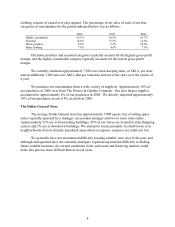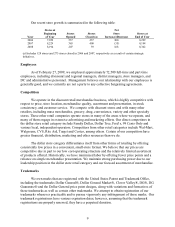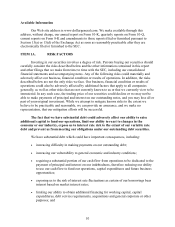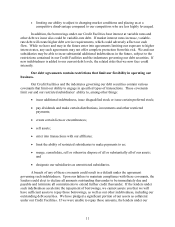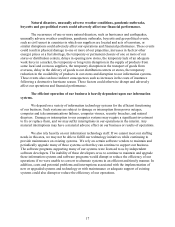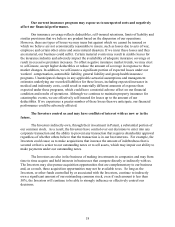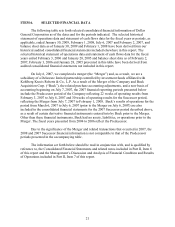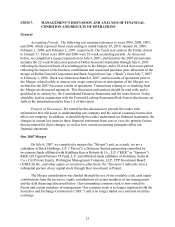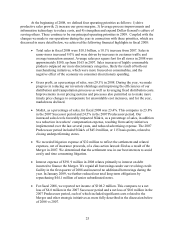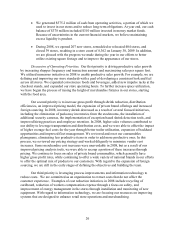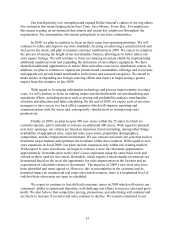Dollar General 2008 Annual Report Download - page 20
Download and view the complete annual report
Please find page 20 of the 2008 Dollar General annual report below. You can navigate through the pages in the report by either clicking on the pages listed below, or by using the keyword search tool below to find specific information within the annual report.18
Our current insurance program may expose us to unexpected costs and negatively
affect our financial performance.
Our insurance coverage reflects deductibles, self-insured retentions, limits of liability and
similar provisions that we believe are prudent based on the dispersion of our operations.
However, there are types of losses we may incur but against which we cannot be insured or
which we believe are not economically reasonable to insure, such as losses due to acts of war,
employee and certain other crime and some natural disasters. If we incur these losses and they
are material, our business could suffer. Certain material events may result in sizable losses for
the insurance industry and adversely impact the availability of adequate insurance coverage or
result in excessive premium increases. To offset negative insurance market trends, we may elect
to self-insure, accept higher deductibles or reduce the amount of coverage in response to these
market changes. In addition, we self-insure a significant portion of expected losses under our
workers’ compensation, automobile liability, general liability and group health insurance
programs. Unanticipated changes in any applicable actuarial assumptions and management
estimates underlying our recorded liabilities for these losses, including expected increases in
medical and indemnity costs, could result in materially different amounts of expense than
expected under these programs, which could have a material adverse effect on our financial
condition and results of operations. Although we continue to maintain property insurance for
catastrophic events, we are effectively self-insured for losses up to the amount of our
deductibles. If we experience a greater number of these losses than we anticipate, our financial
performance could be adversely affected.
The Investors control us and may have conflicts of interest with us now or in the
future.
The Investors indirectly own, through their investment in Parent, a substantial portion of
our common stock. As a result, the Investors have control over our decisions to enter into any
corporate transaction and the ability to prevent any transaction that requires shareholder approval
regardless of whether others believe that the transaction is in our best interests. For example, the
Investors could cause us to make acquisitions that increase the amount of indebtedness that is
secured or that is senior to our outstanding notes or to sell assets, which may impair our ability to
make payments under our outstanding notes.
The Investors are also in the business of making investments in companies and may from
time to time acquire and hold interests in businesses that compete directly or indirectly with us.
The Investors may also pursue acquisition opportunities that are complementary to our business
and, as a result, those acquisition opportunities may not be available to us. So long as the
Investors, or other funds controlled by or associated with the Investors, continue to indirectly
own a significant amount of our outstanding common stock, even if such amount is less than
50%, the Investors will continue to be able to strongly influence or effectively control our
decisions.


